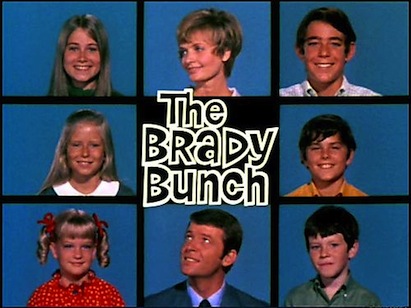The Brady Bunch is a font of life lessons from the importance of compromise to why you should never lie to your parents to ... uh ... never walk out in the backyard without keeping an eye out for a football.
So once again I find myself turning to The Brady Bunch when it comes to dealing with the challenges of selling projects under the Lead Repair & Painting Program rule.
(But not architecture advice -- one bathroom for six kids? What was Mike Brady thinking? And does it bother anyone else that the exterior of the home doesn't match the interior -- the exterior shows the second floor on the left-hand side of the house, on the interior it's on the right. But I digress ...)
Why does lead paint make me think of the Brady Bunch? Why, the famous Cindy "tattletale" episode of course. It's where Cindy Brady has been told not to tattle, but in the end realizes its OK if its for a really good reason, like getting a really groovy record player.
Like Cindy Brady, we've all been taught from an early age not to tattle on others. That important life lesson is playing itself out in the current lead paint issues. Every time the rules come up, remodelers tell me stories of how they've lost jobs to contractors that aren't following the rules. (In a recent Professional Remodeler survey, 65 percent of remodelers said they have lost projects because of LRRP.)
When I'm told that, I ask, "Did you turn the contractor in?" The answer is invariably, "No." Usually they say they don't feel comfortable doing it, they don't want to be "that guy." Here's the plain, honest truth: the EPA has made it very clear the agency is relying heavily on tips in its enforcement.
I get it. Remodelers want to be a good guy, but who exactly are we protecting here? Contractors that are, at the very least, taking money from good companies; and at the worst endangering their clients. Yes, there are problems with the program, but letting lousy companies get away with flouting the rules only hurts the good companies.







